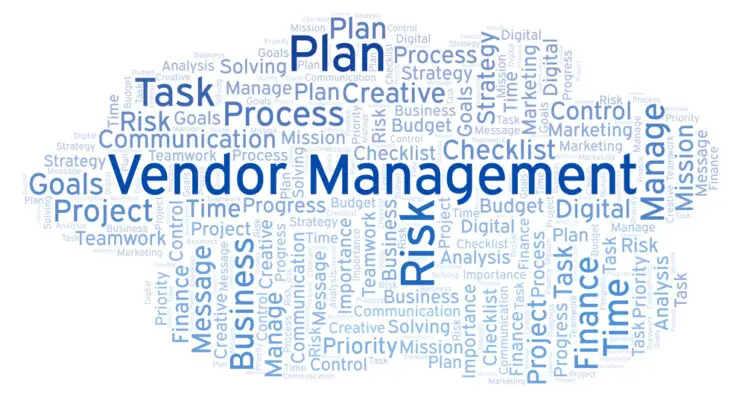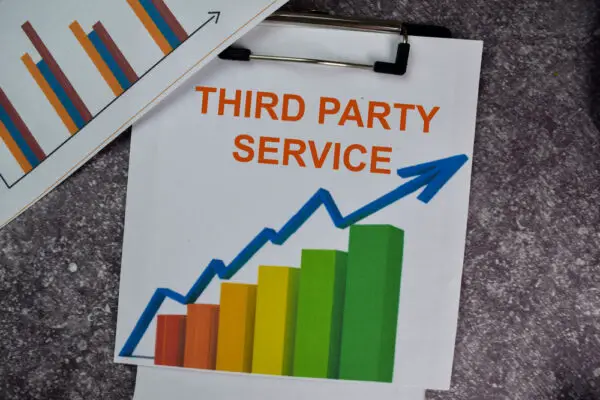Vendor management is critical to any successful business. It involves managing the relationships between your company and its vendors and understanding the associated risks. To help you better manage your vendors and minimize potential risks on business operations.
Vendor risk management is essential to any organization’s risk management strategy. It involves assessing, monitoring, and managing the risks associated with third-party vendors that provide services or products to an organization.
A key vendor risk management component is understanding key indicators (KRIs). They ensure early warning signals of operational performance on vendor risk management.
Vendor management is an important part of any business, as it helps ensure that the organization can control costs, drive service excellence and mitigate risks. It involves identifying, selecting and monitoring suppliers or vendors who provide necessary goods and services.
Key risk indicators (KRIs) are essential for effective vendor management, as they help organizations identify potential risks associated with their vendors and take appropriate measures to reduce them.
This article will discuss the key risk indicators for vendor management and how they can help organizations manage their vendors more effectively.

Examples of KRIs for Vendor Risk Management Metrics
Risk management is the toughest area to measure and manage. It is a challenge to manage TPRM because it requires extensive TPRM management. It is difficult to find the right third-party risk management reporting.
This is a good reason for vendor risk measurement that can be used as an effective way to identify key performance indicators (kPIs) or key risk indicators for security that allow your company to improve. These important metrics will be used in future.
Some examples of KRIs for vendor management include:
a)Percentage of Critical Vendors:
KRI measures the number of critical vendors in an organization’s supply chain. It helps organizations identify which vendors pose the greatest risk and prioritize them accordingly.
Critical vendors are an important part of any organization’s supply chain. It is essential to identify and manage these vendors to ensure the business’s success. Knowing the total percentage of critical vendors in a supply chain can help organizations make informed decisions about their operations and strategies.
There are several factors that should be taken into consideration when determining which vendors are considered critical. These include the vendor’s ability to provide necessary materials or services, reliability, and compliance with regulations. Companies should also consider how much they rely on a particular vendor for critical activities and operations.
Organizations can use various methods to identify critical vendors, such as conducting risk assessments or analyzing supplier performance data. Once identified, companies should take steps to ensure that these vendors meet all necessary requirements and have appropriate controls in place.
This includes performing due diligence on the vendor, monitoring their performance, and having contingency plans in place in case of disruption or failure
b)Total Number of Vendors With an Active Risk Profile:
KRI measures how many vendors have an active risk profile, which helps organizations identify which vendors may be more likely to cause problems or create risks.
c)Supplier Lead Time:
It measures how quickly a vendor can ship an order after receiving it, which can help organizations determine if they are getting their orders on time and if they need to adjust their processes accordingly.
d)Supplier Credit Rating:
This KRI measures the creditworthiness of a vendor, which can help organizations assess whether or not they should continue working with them. High risk vendors will be identified and new vendor will be added to the list and rank vendor risk.
e)Supplier Profit Margin:
It measures the profitability of a vendor, which can help organizations decide if they are getting value for money from their supplier relationships.
f)Supplier OTD (On-Time Delivery) Performance:
This KRI measures how often a vendor delivers orders on time, which can help organizations ensure that they get their orders when needed.
g)Supplier Violations of Regulations:
This KRI measures how often a vendor violates regulations, such as labor laws or environmental regulations, which can help organizations avoid costly fines and penalties. Compliance requirements must be met to avoid penalties and data breach of own organization.
What are KRIs?
KRIs are metrics that measure the level of risk in certain areas of your business. They help you identify potential problems before they become issues, allowing you to take proactive steps to mitigate them. KRIs are especially useful in vendor management, where they can be used to measure the effectiveness of various processes and help identify areas of vulnerability.
At their core, key risk indicators are metrics used to measure the potential for a specific type of risk. They are designed to provide insight into whether or not the measures being taken to mitigate one type of risk are having the desired effect. KRIs can be qualitative or quantitative, depending on how the organization uses them.
The primary purpose of KRIs is to give organizations an early warning system that can alert them if certain risks begin to increase beyond acceptable levels. By keeping track of these metrics on a regular basis, organizations can proactively respond to changes in their environment and better manage their overall risk profile.
For example, suppose an organization notices that its supplier payment terms have become more lenient over time. In that case, it may decide to implement stricter terms in order to reduce its exposure to late payments or other related risks.
KRIs can also be used as performance benchmarks for vendors and suppliers so that organizations can get a better understanding of how well those vendors are performing relative to other similar vendors within the industry.
Importance of Vendor Management KPIs
Vendor management KPIs (key performance indicators) are metrics used to measure the success of vendor relationships and to identify areas for improvement.
KPIs can be used to track various aspects related to vendor management, such as cost savings, customer satisfaction, compliance rate, supplier lead time, return on investment (ROI), support ticket resolution time, defect rate, sell-through rate, and enterprise risk management.
In addition to tracking KPIs, businesses should also develop SLAs (service level agreements) with their vendors. These agreements outline expectations for quality and performance and provide a framework for resolving any issues that may arise.
Overall, vendor management KPIs are essential for evaluating vendor performance and ensuring that businesses get the most out of their partnerships with vendors.
KPIs are vital to identifying and monitoring the vendor’s vendor performance, and conducting vendor performance assessments is crucial to evaluating third party risks. First, look into the KPIs in service agreement agreements (SLAs) which you and your vendor have established.

Vendor Risk Assessment Criteria for KPIs
While the KRIs were created to indicate potential hazards, the KPIs offer an overview of VR performance. And although these metrics may not provide adequate warning signs that vendor risks will develop, they are important when analysing trends and monitoring results.
Setting the KPI for a vendor is primarily influenced by an internal risk assessment of your business. You will understand which third parties are putting the company in a riskier position.
You can determine vendor risk from many angles, let me take an example of vendor risk assessments criteria in the context of setting up a KPI. This includes compliance obligations are a part of the program.Your vendors may need to meet special requirements.
How to Set KPIs for Vendors
A Company’s internal risk assessment must determine vendor KPIs. Risk assessments can be useful in evaluating the types of risks that third parties are most susceptible to your business. A company can be identified by identifying their risks as high or low risk, if they have a network access that is sensitive information crucial to your company’s operations.
Similarly, when your data is stored in the cloud, your service provider is considered risky. Hence, your security has to be monitored daily and even regularly. Risk management program ensures quartely risk assessment sessions done to the vendors.
Using KRI’s Effectively
Developing effective KRIs requires a careful process. The first step is to identify the key goals and objectives of the organization, as well as all current and emerging risks related to each goal. Once these have been identified, data must be gathered in order to track the specific risk associated with each KRI.
This data can come from both internal and external sources, such as customer feedback or market trends. It’s important to ensure that the data is of high quality in order for the KRI to be effective.
Once the KRIs have been developed, they must be monitored regularly in order to track changes in exposure to risk. This monitoring should include tracking progress towards goals, objectives, or outcomes; analyzing trends in customer feedback; and assessing any new risks that may arise over time.
Its important for organizations to review their KRIs periodically in order to ensure that they remain relevant and up-to-date with changing conditions or new developments within the organization or industry. Doing so will help ensure that organizations are able to effectively use their KRIs as an early warning system for potential risks.
In order for KRI’s to be effective, it is important to ensure that appropriate thresholds are established for each KRI so that any potential risks can be identified quickly and addressed appropriately. Additionally, it is important to review these thresholds regularly so that changes in risk levels can be detected early on and addressed accordingly.
Finally, it is important to understand that different types of vendors may require different types of KRIs; for example, a web development company may require different KRIs than a manufacturing company.

Conclusion
Managing vendor relationships effectively requires a comprehensive understanding of their associated risks. By utilizing key risk indicators (KRIs), companies can gain valuable insights into their vendors’ performance levels and better anticipate any potential issues before they arise. This allows businesses to proactively address any issues before they become more serious problems—ensuring quality results from their vendors while minimizing their own risk exposure.
Overall, key risk indicators allow organizations to identify potential risks before they become major issues while also providing valuable insights into how their vendors and suppliers are performing relative to each other. By utilizing KRIs as part of their vendor risk management strategies, organizations can proactively respond to changes in their environment and ensure that their vendors meet industry standards for performance and quality assurance. This helps ensure that businesses remain compliant with regulations while also mitigating potential risks associated with third-party relationships.

Chris Ekai is a Risk Management expert with over 10 years of experience in the field. He has a Master’s(MSc) degree in Risk Management from University of Portsmouth and is a CPA and Finance professional. He currently works as a Content Manager at Risk Publishing, writing about Enterprise Risk Management, Business Continuity Management and Project Management.


